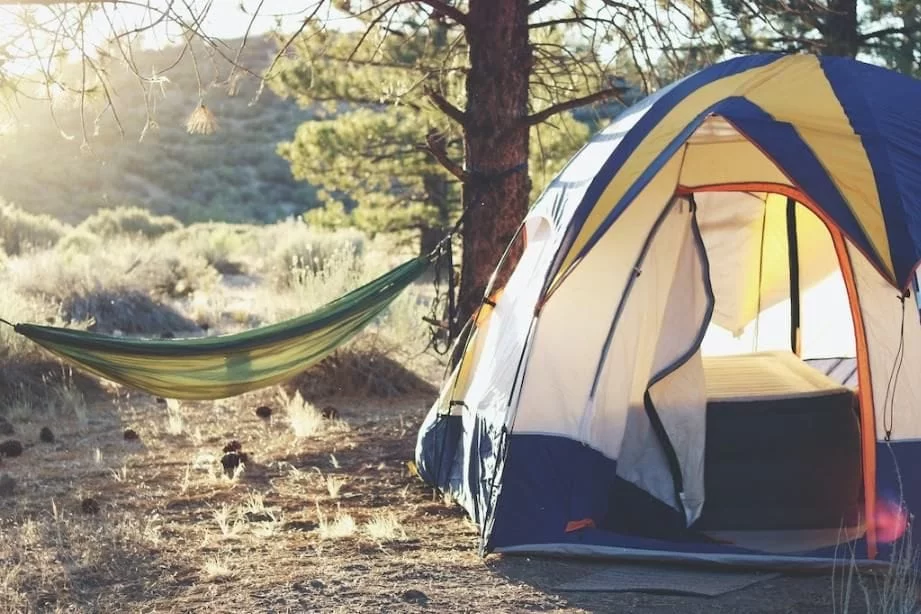How to Stay Comfortable While Camping in a Hammock: Ultimate Guide for Relaxation
- Choose the Right Hammock for Comfort
- Selecting the Perfect Sleeping Bag and Pad
- Finding the Perfect Camping Spot
- Mastering Hammock Sleeping Positions
- Essential Gear for Hammock Camping Comfort
Choose the Right Hammock for Comfort
One of the most important factors in staying comfortable while camping in a hammock is choosing the right one. Not all hammocks are created equal, and some are better suited for overnight camping than others. To start, make sure the hammock is large enough for your height and weight, with enough space to stretch out and get cozy.
Look for hammocks made from durable, breathable materials like nylon or parachute fabric. These fabrics are not only lightweight and strong but also wick moisture away, keeping you dry throughout the night. Some hammocks come with integrated mosquito nets or rain flies, which are great additions for keeping the bugs away and ensuring a peaceful night’s sleep in the great outdoors.
For added comfort, opt for hammocks with spreader bars. These keep the hammock open and flat, preventing it from curling around your body and providing more room to relax. However, traditional gathered-end hammocks are still a favorite for many campers for their simplicity and ease of setup.
Selecting the Perfect Sleeping Bag and Pad
While hammocks are inherently comfortable, sleeping in one overnight can be a challenge, especially when it comes to temperature regulation. To stay warm and comfortable, it’s essential to bring the right sleeping gear. A sleeping bag is a must, but sleeping in a hammock requires a few additional considerations.
First, consider a hammock-specific sleeping bag. These are designed to keep you warm even when sleeping in a hammock, preventing cold spots that can form between the hammock and your body. If you’re using a standard sleeping bag, you may want to add a hammock underquilt. Underquilts are designed to hang underneath your hammock, providing insulation from the cold air below. This is crucial for staying warm in cooler temperatures, as the fabric of the hammock doesn't offer insulation like the ground does in a traditional tent.
A sleeping pad is another option, though it’s less effective than an underquilt when it comes to insulation. If you do choose a sleeping pad, make sure it’s lightweight and small enough to fit comfortably in your hammock without crowding you.
Finding the Perfect Camping Spot
When hammock camping, finding the perfect spot to set up your hammock can make a world of difference in how comfortable you are. Look for two trees that are at least 10-15 feet apart, depending on the length of your hammock. The trees should also be sturdy and healthy, as you’ll be relying on them to hold your weight throughout the night.
The ground underneath your hammock is just as important. Avoid setting up over rocks or uneven terrain, as this can lead to an uncomfortable night of sleeping. Choose a spot with soft ground or grass, and make sure you’re away from any areas prone to flooding, especially if rain is in the forecast.
It’s also important to consider your surroundings. Make sure the area is free from potential hazards, like falling branches or wildlife. Ideally, set up your hammock in a quiet area away from wind or noise, creating a serene environment for a peaceful rest.
Mastering Hammock Sleeping Positions
One of the most common complaints when hammock camping is discomfort due to improper sleeping positions. Unlike sleeping on the ground, hammocks don’t provide a flat surface, so it’s important to adjust your position for optimal comfort.
The key to sleeping well in a hammock is the “diagonal lay” technique. Instead of lying straight down the middle of the hammock, try to position yourself at a slight angle (about 30-45 degrees). This allows your body to relax into a more horizontal position, mimicking a flat sleeping surface. Many hammock campers also recommend using a pillow or stuff sack filled with clothes to support your head and neck, keeping you in a comfortable position throughout the night.
Experimenting with different sleeping positions during the day can help you figure out which one works best for your body. Finding the right position is crucial for staying comfortable and getting a good night’s sleep.
Essential Gear for Hammock Camping Comfort
In addition to your hammock and sleeping bag, there are a few other essential pieces of gear that will ensure a comfortable and enjoyable hammock camping experience. These include:
- Rain Fly: A rain fly is a must-have to protect your hammock from rain and moisture, ensuring you stay dry throughout the night.
- Bug Net: If you’re camping in a mosquito-prone area, a bug net is a great addition to keep pests away while you sleep.
- Hammock Straps: High-quality straps are necessary for safely securing your hammock to trees. Look for ones that are wide and strong enough to distribute weight evenly.
- Camp Shoes: Comfortable footwear, like sandals or camp shoes, will help you navigate around your campsite with ease.
By investing in the right hammock camping gear, you can ensure that your experience is both comfortable and stress-free, allowing you to fully enjoy the beauty of nature.
If you're planning your next hammock camping trip and want to ensure you’re as comfortable as possible, consider exploring more about the best hammock camping spots and gear. For those seeking an unforgettable camping experience, Pine Cliff Resort offers exceptional accommodations and outdoor adventures. Whether you’re new to hammock camping or an experienced pro, there’s something for everyone at this beautiful destination.
Want to learn more? Click here to book your perfect hammock camping experience!







